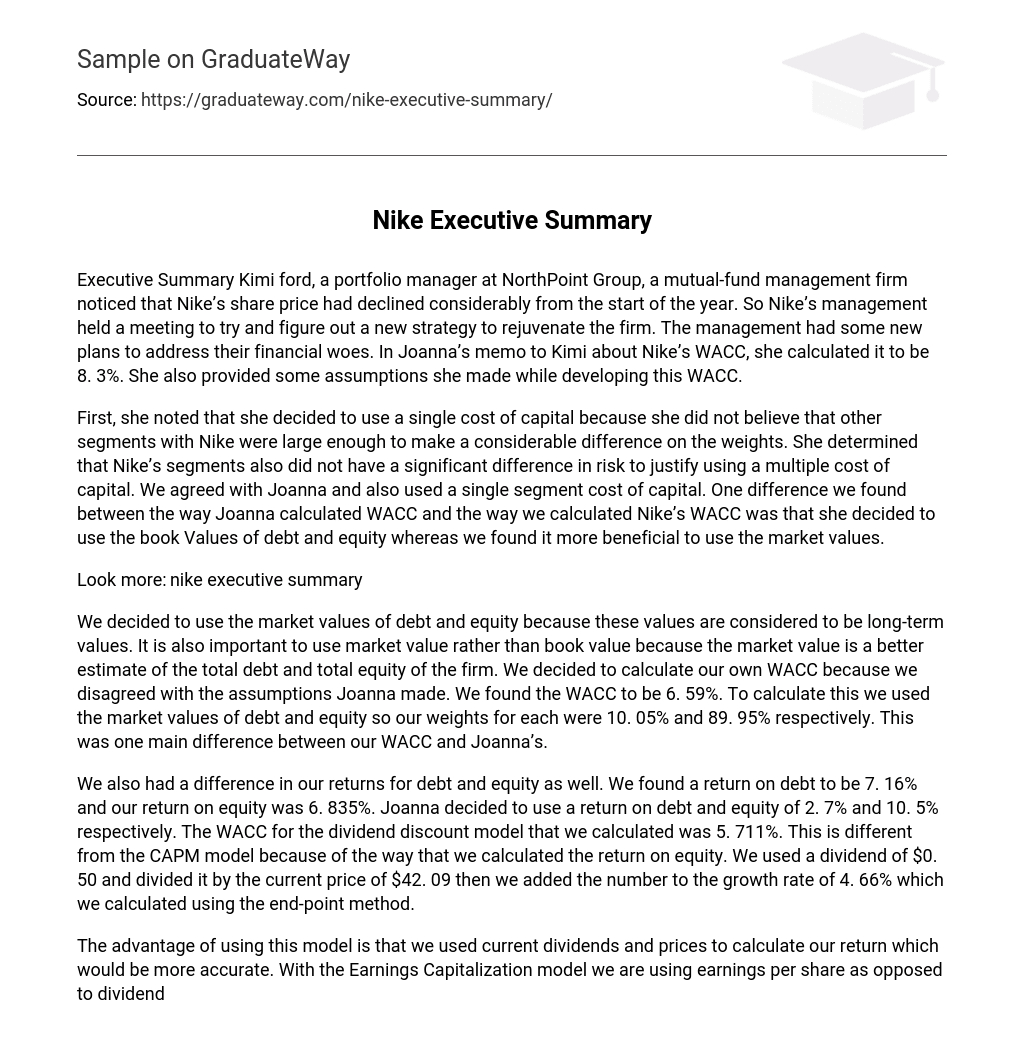Executive Summary Kimi ford, a portfolio manager at NorthPoint Group, a mutual-fund management firm noticed that Nike’s share price had declined considerably from the start of the year. So Nike’s management held a meeting to try and figure out a new strategy to rejuvenate the firm. The management had some new plans to address their financial woes. In Joanna’s memo to Kimi about Nike’s WACC, she calculated it to be 8. 3%. She also provided some assumptions she made while developing this WACC.
First, she noted that she decided to use a single cost of capital because she did not believe that other segments with Nike were large enough to make a considerable difference on the weights. She determined that Nike’s segments also did not have a significant difference in risk to justify using a multiple cost of capital. We agreed with Joanna and also used a single segment cost of capital. One difference we found between the way Joanna calculated WACC and the way we calculated Nike’s WACC was that she decided to use the book Values of debt and equity whereas we found it more beneficial to use the market values.
Look more: nike executive summary
We decided to use the market values of debt and equity because these values are considered to be long-term values. It is also important to use market value rather than book value because the market value is a better estimate of the total debt and total equity of the firm. We decided to calculate our own WACC because we disagreed with the assumptions Joanna made. We found the WACC to be 6. 59%. To calculate this we used the market values of debt and equity so our weights for each were 10. 05% and 89. 95% respectively. This was one main difference between our WACC and Joanna’s.
We also had a difference in our returns for debt and equity as well. We found a return on debt to be 7. 16% and our return on equity was 6. 835%. Joanna decided to use a return on debt and equity of 2. 7% and 10. 5% respectively. The WACC for the dividend discount model that we calculated was 5. 711%. This is different from the CAPM model because of the way that we calculated the return on equity. We used a dividend of $0. 50 and divided it by the current price of $42. 09 then we added the number to the growth rate of 4. 66% which we calculated using the end-point method.
The advantage of using this model is that we used current dividends and prices to calculate our return which would be more accurate. With the Earnings Capitalization model we are using earnings per share as opposed to dividends to calculate the WACC the advantage of using this model is the same as the dividend discount model because both models are using current prices and earnings. We believe that Kimi should recommend an investment in Nike because the current price is undervalued and we found that the firm’s value is greater than expected.





